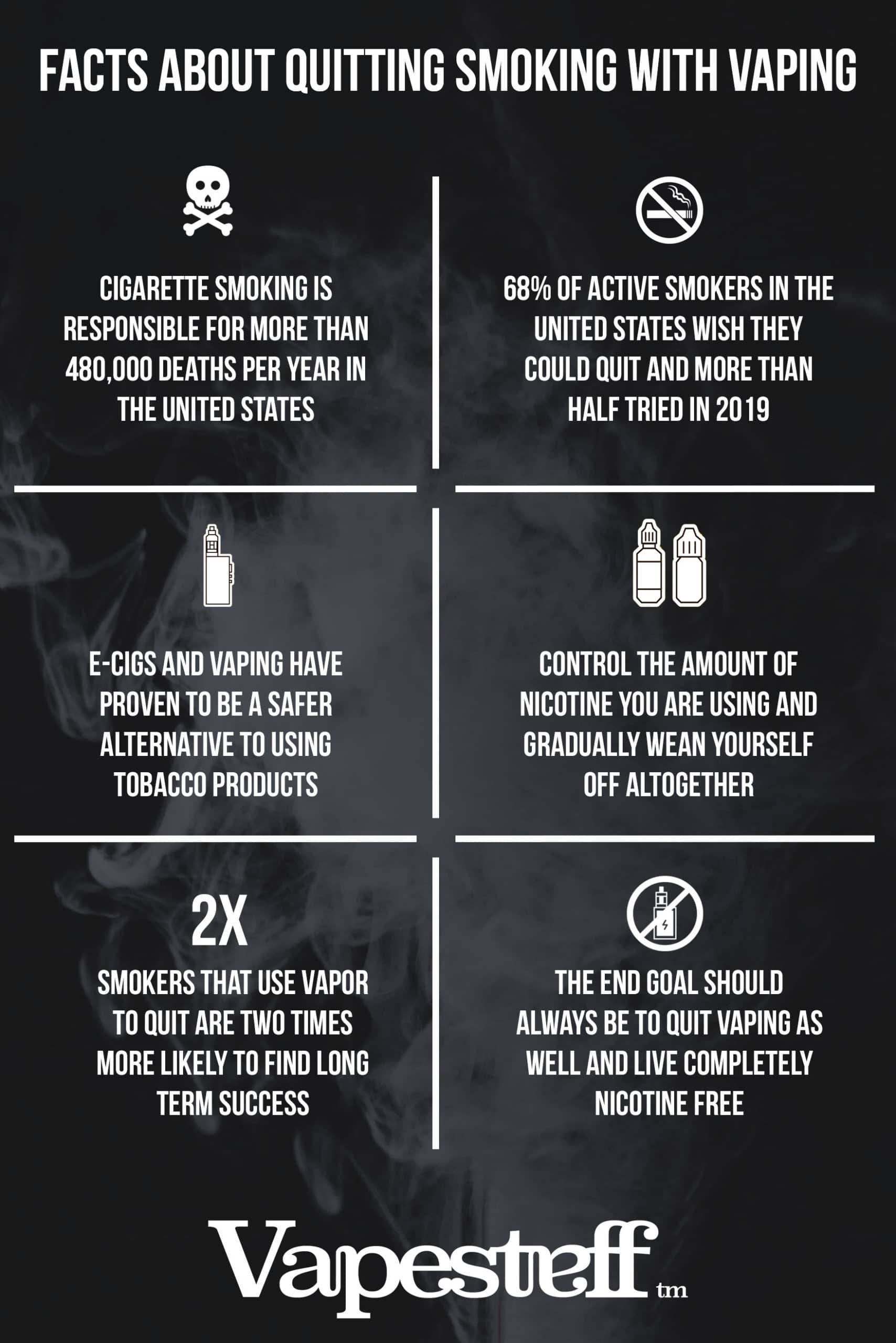
Cigarette smoking is one of the most costly (concerning both finance and health) and easiest traps to fall into, particularly as an American ‘consumer’.
A 24-hour news cycle, a growing reliance on technology, generally fickle lifestyles, and frankly modern-day stresses leave many people seeking outlets (a way out – a break) and or a means to cope (often from alcohol, nicotine, and or caffeine sources).
When people have incredible access to a stimulant such as cigarettes (containing nicotine) to give them a boost (or a break), when cigarettes are also attributed to countless diseases, detailed investigation by the consumer is extremely important.
Make no mistake about it, we’re living in a sort of bizarro world where we have a product (tobacco cigarettes) that are known to cause disastrous results to its consumers, where the manufactures of such products (‘big tobacco’) even claim and are increasingly public about their own products detrimental health effects, and said products are readily available at any corner store in the world for anyone of age to purchase.
In other words, there’s a known toxic product (tobacco cigarettes) on the world market and its industry is essential ‘too big to fail’. Due to an incredible amount of false advertising, misinformation, and essentially propaganda poured into society from this toxic product conception, toxic tobacco cigarette use is just accepted and or normalized.
Table of Contents

Vapor Nicotine Replacement Options
Vapor products are at the center of much controversy. With hundreds of millions of dollars spent yearly defending toxic products (cigarettes) that literally contain arsenic and formaldehyde, it’s not difficult to comprehend that nicotine replacement options like vapor are going to be attacked. To be fair, some criticism of vapor related products is certainly warranted – namely as it relates to curbing teen use, provocative advertising, and marketing tactics. However, our staunch view is that vapor products provide the best available bridge to help people quit smoking and ween themselves from nicotine altogether. Companies like Direct Vapor offer vape juices in a wide variety of nicotine levels.

Gum Nicotine Replacement Options
There are several nicotine gum options on the market. Chewing nicotine gum is a viable option for tobacco cigarette users trying to quit smoking. Nicotine gum is especially a good solution for tobacco cigarette users who have a need for discretion, such as in the work-place. Another good aspect of nicotine gum is the ability to various strengths. Like vapor products, users can slowly dial down their nicotine strength before weening themselves off entirely. The downside of nicotine gum is frankly the taste and the fact that the process misses the mark in terms of solving the physical addiction aspect of smoking. For that curious, nicotine get’s into the bloodstream via gum slightly faster than patches.
(Source: Scientific American)

Patch Nicotine Replacement Options
Much like nicotine gum, nicotine patches are a viable option to quit smoking. Similarly, nicotine patches are great for users who prefer or need to be ‘stealthy’, such as when in the work-place / office. Correctly, nicotine patches very in strength, allowing users to slowly ween themselves from nicotine completely. The scientific wording for the process of using nicotine patches is called a transdermal process (which is of course because nicotine is absorbed into the bloodstream via the skin). Again, the main purpose of using such a nicotine replacement product is to ween oneself from nicotine altogether, but importantly to reduce the withdrawal stresses associated with quitting smoking.
(Source: Medicine.net)

Big Tobacco Investigations
Listed previously are personal solutions to quitting smoking, each of which we are happy to attach ourselves to. However, we love going to the core of problems, especially big ones. At the core of the cigarette problem is essentially an entire industry, coined ‘big tobacco’. The term big tobacco stems from the fact that the most influential entities tied to tobacco cigarette products are indeed massively large multi-national corporate conglomerates. Big tobacco has been incredibly successful in its ability to actually market and sell a toxic product for decades. We have zero confidence that battling these corporate entities in court will lead to any sort of morality repentance or even necessary extensive changes in the law. However, we have tremendous confidence in the truth and an uncanny optimistic outlook on grassroots movements. Despite big tobacco’s decades-long reign, cigarette smoking in the U.S declined from 20.9 percent in 2005 to 15.5 percent in 2016 – and we believe it will continue to drop over time, especially as the truth emerges.
(Source: Centers for Disease Control and Prevention)
Vapor Nicotine Replacement Options
Vapor products are an amazing option for current cigarette smokers to switch to. Frankly, the primary growth in this industry is due to the fact that they are a phenomenal substitute for tobacco cigarette users. This is of course because vapor products are a solution for both the physical and chemical addictions associated with smokers.
E Liquid
E-Liquid (or e juice) is the substance utilized by electronic devices to create vapor. E-liquid is comprised of water, flavor additives, polypropylene glycol, vegetable glycerin – typically with nicotine as an option (on an mg/mL basis). The primary functions of nicotine replacement therapy are to isolate nicotine itself and to consume less of it over time. E-liquid accomplishes this much the same way nicotine gum and patches do. That is of course by offering a variety of dosages which are typically but not limited to 0 mg (0%), 3 mg (0.3%), 6 mg (0.6%), 12 mg (1.2%) and 24 mg (2.4%).
Refillable Vaporizers
Refillable e-liquid vaporizers are simply refillable devices that come in a wide variety of shapes, sizes, and types. Importantly, refillable vaporizers are extremely less expensive to use over time than non-refillable vaporizers such as disposables, cigalikes and many pod based devices. This is of course due to the fact that e-liquid is very inexpensive to buy in bulk, whereas cartridges, pods, and disposables are relatively expensive to routinely purchase. Additionally, refillable vaporizer features vary widely in terms of settings and functions. Thus, there are devices that are incredibly simple to use and devices that are slightly more complicated.
Disposable Vaporizers
Disposable e-liquid vaporizers are just that, disposable. Disposables are readily available at gas stations and corner stores across the country. They are a phenomenal option for current cigarette smokers to test vapor with. They couldn’t be easier to use (no settings – just puff). However, performance among disposable vapor products varies widely. There are a ton of brands that offer disposable products and many of them lack quality and performance. Blu and NJOY (latest versions) have typically been among our highest rated disposable brands. Again, the downside of disposable vapor options is their price when considering long-term use. Disposable vapor options are again a great product for first-time vapor users (to test) and for current vapor users to rely on when traveling or when their regular device is malfunctioning etc.
POD Vaporizers
POD e-liquid vaporizers are relatively simple devices that utilize small pods filled with e-liquid. This is of course compared to typical refillable vaporizer devices that utilize larger tanks to store e-liquid. POD vaporizers have largely taken the world by storm. They were able to gain such market traction due to their compact and innovative design. There are essentially two top-level ways to consider POD based vaporizers. On one hand, they’re incredibly compact, easy to use, and deliver strong performance. On the other hand, many POD vaporizers utilize PODs that aren’t refillable. Meaning, the cost of using a POD based device is much more expensive than using a typical refillable e-liquid vaporizer. It should be noted however that the most notorious POD-based device (JUUL) is considering offering refillable PODs.
Understanding the Forms & Types of E Liquid
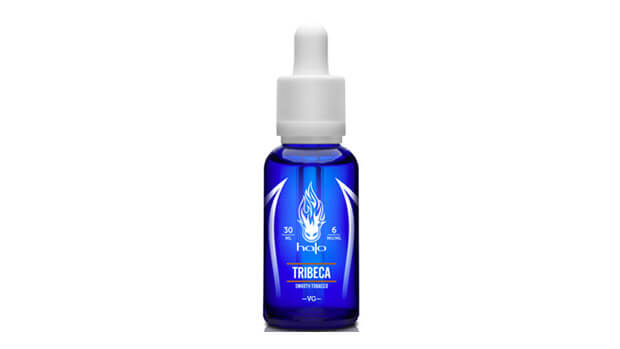
The e-liquid market is vast. Almost a Willy Wonka industry, there are e-liquid flavors for virtually any taste you desire. Which is of course quite nice, choices and options are encouraged in any market. However, in the case of e-liquid, because vapor products are such a new technology, understanding the array of options can be confusing.
The E Liquid PG/VG Ratio:
The PG/VG ratio is simply the amount of polypropylene glycol compared to vegetable glycerin. The most common PG/VG ratios are 50/50, 70/30 and 30/70, though they’re certainly additional options such as 80/20, 20/80, and so on. Essentially, PG is the main component of the commonly desired and referred to ‘throat hit’. The VG component on the other hand is most closely associated with total vapor production (ie less throat hit, but more vapor clouds).
The E Liquid Nicotine Percentage:
Nicotine percentage is simply the percentage of nicotine in an e liquid. Nicotine content is often displayed in mg/mL and or percentage. The most common e liquid nicotine content amounts by volume are 0 mg (0%), 3 mg (0.3%), 6 mg (0.6%), 12 mg (1.2%) and 24 mg (2.4%)
Most Common E Liquid Flavor Categories:
- Tobacco
- Menthol
- Fruit
- Candy
- Dessert
- Drink
E Liquid Shopping Checklist:
- Choose a reputable retailer.
- Be open to trying different flavors.
- Ensure the PG/VG ration is compatible with your device.
- Choose a proper nicotine percentage based on your average cigarette use.
- Stay fully stocked to avoid going back to tobacco cigarettes.
E Liquid Flavors & Eliminating Teen Vapor Allure:
Vapor products, including flavored e-liquid, are the most important technological innovation in terms of helping smokers quit smoking. However, vapor products have been on rising among teens. Therefore, while we don’t stand for bans on any flavors, we do stand for bans on any marketing practices that directly target our youth.
Understanding the Various Types of Refillable E Liquid Vaporizers
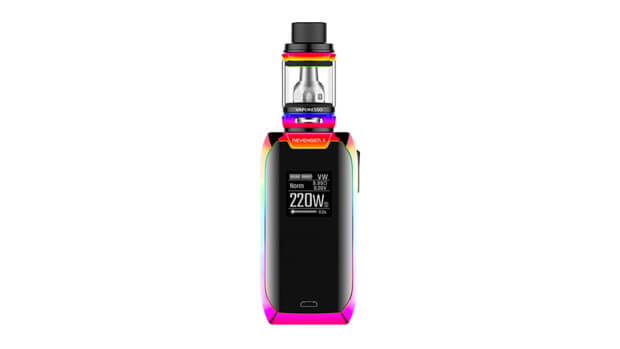
As you most likely know by now, there is a tremendous amount of different refillable e-liquid vaporizers on the market. There are so many, that it’s likely confusing to decide which one or type to choose. Know this, there are basic, intermediate, and advanced refillable e-liquid vaporizer options. In other words, there is something for everyone.
Common Refillable E Liquid Vaporizer Setting & Function Options:
- Temperature Control
- Wattage Control
- Voltage Control
- Resistance Control
Most Common Refillable E Liquid Vaporizer Categories:
- Pen
- Box MOD
- Tube MOD
- Mechanical MOD
- All-In-One
Refillable E Liquid Vaporizer Shopping Checklist:
- Choose a reputable retailer.
- Understand personal desire/ability to tinker with tech.
- Learn the required maintenance of the device.
- Calculate the average monthly cost of use.
- Stock up on e liquid and required components such as coils.
Refillable E Liquid Vaporizer Safety:
E-liquid vaporizers of all types, specifically those that are refillable such as any type of MOD, are relatively simple electronic devices. However, in this blisteringly fast-paced market, the need for safety precautions cannot be over-stated.
We’ve all heard of the horror stories, although limited in number. Vapor devises that malfunction, blow-up and or catch fire, etc. Regulations by the FDA are on their way to help protect consumers. In the meantime, ensure that your vapor device has an automatic cutoff function. Also, generally be proactive, especially when traveling (always make sure your device is turned completely off when being stored anywhere, especially in baggage.)
Understanding Disposable E Cigarettes
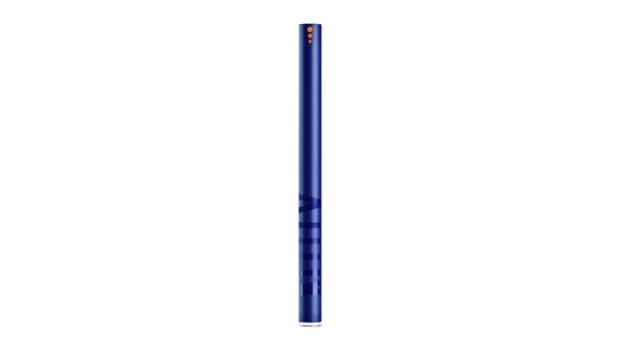
Disposable electronic cigarettes are the most simple type of e-liquid vaporizer on the market. They are designed to mimic the look, size, and feel of traditional tobacco cigarettes. They’re of course designed to be used and then thrown away.
Disposables typically last anywhere from 6 to 12 hours depending on usage. They’re relatively cheap upon initial purchase, however, when buying in bulk and or over a long period of time, they’re much more expensive than any type of refillable and rechargeable device.
Our absolutely favorite disposable (and one we often purchase while traveling or suffering from a device malfunction) is the NJOY Daily. It’s not even close. Throughout our testing, the NJOY Daily delivered big-time in terms of reliability, performance, and flavor.
Disposable E Cigarette Shopping Checklist:
- Search for a reputable brand.
- Determine what nicotine percentage is right for you.
- Choose a standard flavor such as tobacco or menthol.
Understanding POD Based E Liquid Vaporizers
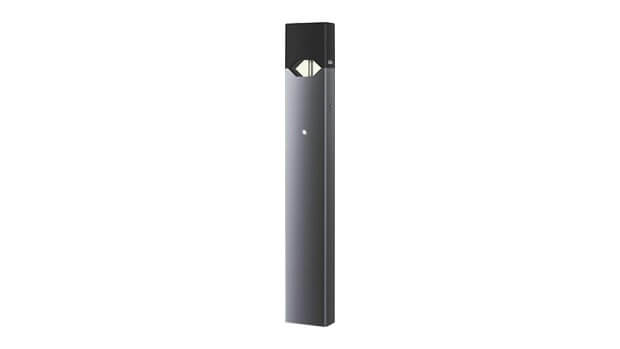
POD based e-liquid vaporizers have gotten a bad rap in the mainstream media over the past several months. This is of course primarily due to the most popular POD device, the JUUL (there are others), and its attachment to an increase in vapor use among teens.
While we absolutely disavow any and all teen vapor use, it’s important to not demonize an entire company and or product line due to its ‘popularity’. Not to discount the absolute need to eliminate teen vapor use, but JUUL actually makes a phenomenal product and it can help the currently 40 million tobacco cigarette users to quit smoking.
We’ve been calling for sleek and compact vapor products for years now and are happy to see the market trending in that direction. We fully expect to see continued innovation and more POD type devices on the market in the coming years.
You won’t find a more innovative yet simple, sleek, and compact type of e-liquid vaporizer than that of POD based devices. The only downsides to POD devices as compared to common refillable systems are the cost of refills and battery longevity.
Gum Nicotine Replacement Options

Nicotine gum has been a pillar in the realm of NRT (nicotine replacement therapy) since 1984. Nicotine gum is of course chewing gum that contains nicotine, which is absorbed into the bloodstream via the mouth. Many cigarette users have been able to use nicotine gum to quit smoking. The common thread among all nicotine gums are of course nicotine and in-fact, varying percentages of nicotine. This allows the user to continue to lower their dosage of nicotine over time.
Nicorette
Nicorette is by far the most recognizable brand in the nicotine gum market. Nicorette is available in two different strengths, which are 2 mg and 4 mg. Additionally, it’s available in six different flavors, which are original, mint, spearmint burst, white ice mint, fruit chill, and cinnamon surge. Nicorette offers a number of resources to aid in the process of quitting smoking, including but not limited to a general 12-week program.
Thrive
Thrive is a lesser-known nicotine gum brand, but certainly a solid option nonetheless. Thrive is available in two different lines, including Thrive Complete and Thrive Original. The Thrive Complete line is available in 2 mg and 4 mg nicotine strengths and is only currently available in a fresh spearmint flavor. The Thrive Original line is also available in 2 mg and 4 mg strengths but is sold in 2 different flavors which are cool mint and fruit explosion.
Up & Up
Up and Up nicotine gum is a brand under the Target Corporation umbrella. Up and Up nicotine gum is available in 2 mg and 4 mg strengths, coated and uncoated options, and in a variety of flavors. The available flavors are original, mint, fruit, mint freeze, cinnamon, and cool mint. Additionally, Up and Up nicotine gum is available in a sugar-free option as well as 20 counts all the way up to 310 counts.
Nicotine Gum Key Points
Nicotine gum is a solid option for current tobacco cigarette users to consider when trying to quit smoking. In our experience, vapor products are far more effective because they directly deal with the physical addiction associated with cigarettes. Nonetheless, nicotine gum is still a relevant option due to the fact that it can be used completely discreetly.
The most important aspects of nicotine replacement therapy are to find a product that you like and to develop a consistent routine.
General Nicotine Gum Instructions:
It’s generally recommended that users chew the gum until it produces a slight tingling sensation. Once this sensation has been produced, users should shift the gum in-between their cheek and gums. The tingling sensations end, chew again and then shift between cheek and gums. This process is to be repeated until the user’s nicotine craving ends. This process typically last about 30 minutes.
- Wait at least 15 minutes after eating or drinking before using nicotine gum.
- Pregnant women should neither smoker or use any sort of nicotine replacement therapy.
- 2 mg nicotine gum is recommended for light smokers.
- 4 mg nicotine gum is recommended for heavy smokers.
- When used properly, the 4 mg option delivers about 3 mg of nicotine to the user.
- When used properly, the 2 mg option delivers about 1 mg of nicotine to the user.
- Do not swallow.
- Do not use for more than 12 weeks.
- Do not use more than 24 pieces in 24 hours.
Recommended Nicotine Gum Dosage Schedule:
During the first 6 weeks of use, it’s recommended that users chew 1 piece every 1 to 2 hours. During the following 3 weeks, users should chew 1 piece every 2 to 4 hours. During the final 2 weeks, it’s recommended that users chew 1 piece every 4 to 8 hours.
Nicotine Gum Pricing & Availability
In America, during the 1980s nicotine gum was only available with a prescription. Times have greatly changed however and now nicotine gum is essentially available over-the-counter wherever tobacco products are sold.
Top Nicotine Gum Retailers in The United States:
- CVS
- Walgreens
- Walmart
- Rite Aid
- Kroger
- Target
Prices for nicotine gum range from $7 for 20 pieces, up to $56 for 310 pieces. Generally, nicotine gum is fairly priced, equating to roughly the same price as tobacco cigarettes. It should be noted however that large savings can be had by purchasing in bulk.
Patch Nicotine Replacement Options
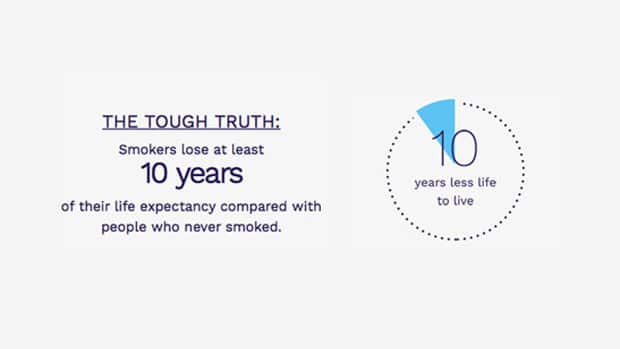
Nicotine patches, as a nicotine replacement therapy, entered the market in the mid-1980s and early 1990s. Nicotine patches are of course nicotine-containing patches designed to adhere to a user’s skin and deliver nicotine into the bloodstream. Clinically, nicotine patches are known as transdermal. Transdermal patches have been around since the late 1970s and exist to this day, delivering a wide variety of treatment-related drugs into the bloodstream.
Nicoderm CQ
Like Nicorette, Nicoderm CQ is the most widely recognized nicotine patch brand in the industry. Nicoderm CQ is available in 3 different strengths, including 21 mg, 14 mg, and 7 mg. The product selection has a built-in 3 step program to help users transition to lower doses of nicotine.
Habitrol
Habitrol is a product stemming from Dr. Reddy’s Laboratories, Inc. Much like Nicoderm CQ, Habitrol is available in 3 strengths. Those 3 nicotine strengths are 21 mg, 14 mg, and 7 mg respectively. Habitrol is also designed around a 3 step program to help users quit smoking.
Equate
Equate is a value line of products offered by Walmart. Equate’s nicotine patches are very similar to that of Nicoderm CQ’s as well as Habitrol’s. There are 21 mg, 14 mg, and 7 mg nicotine strength options with a built-in 3 step program. Equate nicotine patches however are available in more than just 14 counts.
Nicotine Patch Key Points
Nicotine patches have come a long way over the years. The most significant innovation in nicotine patches is the layered design. The new multi-layer design allows for nicotine to be slowly absorbed through the skin and into the bloodstream over a full 24 hour period. This is of course compared to an old single layer design which required the user to use multiple patches throughout the day.
Starting Nicotine Patch Strength Recommendations:
- More than 10 cigarettes per day = Step 1 (or 21 mg of nicotine).
- Less than 10 cigarettes per day = Step 2 (or 14 mg of nicotine).
General Nicotine Patch Instructions:
- Place on any area of skin that is clean and dry.
- Patch can remain on skin for up to 24 hours.
- Use Step 1 for 6 weeks, Step 2 for 2 weeks and Step 3 for 2 weeks.
- Do not cut the patch.
- Do not use if pregnant. (Consult with a doctor.)
- You can shower or swim with patch – for a short period of time.
- Do not place over a tattoo.
- Patch can be worn in a tanning bed.
- If you take other medications, consult with a doctor before using.
- Keep out of reach of children and pets.
- Dispose of properly.
- Using patches longer than 8 – 10 weeks has been deemed okay.
- Only use 1 patch at a time.
Nicotine Patch Pricing & Availability
Nicotine patches are available for retail purchase at virtually every pharmacy in the United States. Additionally, nicotine patches are sold at a large number of retailers who sell tobacco cigarette products.
Top Selling Nicotine Patches Pricing:
- Nicoderm CQ Steps 1, 2 & 3 (14 Patches Each) – $38.98 Each
- Habitrol Steps 1, 2 & 3 (14 Patches Each) – $27.99 Each
- Equate Steps 1, 2 & 3 (14 Patches Each) – $25.98 Each
While prices do vary, the actual layered transdermal design is essentially the same across each different brand. Really, the only difference between various brands is the overall quality in terms of adhesion. Furthermore, while Nicoderm CQ is the most expensive option, they’re also the choice with the most additional resources and extensive guidance in quitting smoking.
Nicotine patches are a solid option for those looking for a solution to quitting smoking. Again, it all comes down to making the choice to quit, locating an isolated nicotine product, and sticking to a routine to lower your intake.
Big Tobacco Investigations
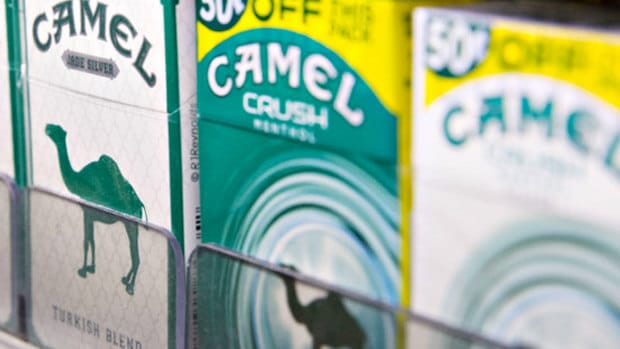
With the addition of vapor products to other solutions such as nicotine patches & gums, there has never been an easier time to stop smoking cigarettes. However, when understanding the complete history of the tobacco cigarette industry, the call for justice becomes alarmingly loud. The days of a multi-billion dollar per year industry is shrouded in mystery and misinformation are over. It took almost 50 years for any significant legislation to be passed in the United States to tell the public the truth about tobacco cigarettes. The tobacco cigarette industry is on the ropes and we’re going to knock it out – not just let it slowly fade away.
Tobacco Plant Herbicides & Pesticides
This particular rabbit hole goes deep. It has to do with putting profits and essentially greed before all else, namely humans/people/public health. Creating an enormous amount of demand for such a dangerous product required meticulous planning, gigantic marketing campaigns, lobbying efforts, and chemical engineering. When that demand has been firmly established, the focus then shifts to the supply itself. Maximizing the commercial farming of tobacco plants by any means necessary. This of course includes but is not limited to using herbicides and pesticides on said tobacco crops that are potentially harmful to consumers.
Tobacco ‘Filler’ Contents
It’s our opinion that at some point in the future, people that study what took place in the mid 20th and early 21st centuries regarding tobacco cigarettes will find it absolutely unbelievable. During this time period, where an industry whose sole product directly contributed to the deaths of millions of people, was able to not only operate but to flourish. Here’s a quick fact, tobacco leaves such as burley, flue-cured, and oriental only make up about 50% of a cigarette. The other 50% is often labeled ‘filler’, or ‘additives’ or ‘add-ons’. What exactly is in the ‘filler’ you ask? For starters, it’s a mixture of stripped stems, tobacco dust swept from the factory’s floor, and reclaimed or expired product sent back to the factory for repurposing.
Promotion of Tobacco Cigarettes
Perhaps the greatest offense of the tobacco cigarette industry has been the misinformation and promotional campaigns leveled against consumers in what amounts to one of the longest-running propaganda campaigns in American history. In fairness, we’ve come a long way since the 1940s, 1950’s and 1960s when it was common to see doctors and dentists actually endorsing cigarettes. However, while there are now laws in place to hinder such dubious advertising, cigarettes are indeed still marketed in our culture to promote a sense of being cool, independent, and or represent that common bad boy image. Once again, the exact product which is directly attributed to over 1,300 deaths every single day is still openly promoted in American media.
Chemicals Used in the Production of Tobacco Plants

If you’re alive and live in the United States, there is a phenomenal chance that you’ve at least heard the acronym GMOs (genetically modified organisms). If you think GMOs are only associated with food, think again. Tobacco cigarettes also contain GMOs, along with a myriad of other pesticides and herbicides.
We’re essentially talking about commercialized farming and the maximization of profits above all else, including associated health concerns. Commercialized tobacco crops are specifically heavily dependent on pesticides to meet the timely and routine demand for cigarette consumption.
In this muck, this dirty industry that is responsible for the deaths of roughly 5 million people per year worldwide, the fight boils down to industry influence over regulatory agencies.
Known Pesticides Used on Tobacco Crops:
- Methoprene
- Ethylene Bisdithiocarbamates
- Phosphine
Frankly, data sets for this type of investigation are few and far between (often not published or made public until several years have passed – if ever). Either way, we’ve found that in the United States, between the years 1994 and 1998, roughly 27 million pounds of pesticides including insecticides, herbicides, fungicides, and others were applied to tobacco crops.
To be clear, big tobacco has been using deceptive tactics to ensure their industry’s sustainability and growth. Those tactics include but are certainly not limited to fraudulently influencing regulatory agencies in charge of overseeing public health, specifically concerning the types and amounts of pesticides used on tobacco crops.
Source: The Tobacco Industry and Pesticide Regulations: Case Studies from Tobacco Industry Archives
Known & Unknown Tobacco ‘Filler’ Ingredients

This is a really cute process. Again, only 50% of a cigarette is actual tobacco (along with pesticides, herbicides, and other chemicals). The other 50% is known as ‘filler’, ‘additives’ and or ‘add-ons’. This is a mixture of stripped tobacco stems, tobacco dust swept from the factory’s floor and reclaimed or expired tobacco product sent back to the factory for repurposing.
The ‘filler’ content is then mixed in a giant vat where all of the solubles are removed before it’s pooled into another giant chemical reaction vat. What’s created in this vat is known as ‘the mother liquor’, which is again the filler combined with water, along with a host of other chemicals. Among the chemical additives but certainly not limited to, are diammonium phosphate, urea, ammonia hydroxide. These additives are to chemically manipulate nicotine. Additional additives are introduced to smooth the overall taste and make the concoction tolerable. Among these ingredients but not limited to, are chocolate, butterfat, and glycerol.
If you’d like a complete list of all intentional and unintentional additives for each different tobacco cigarette brand, keep dreaming. That information is considered a trade secret, it’s confidential. In the United States, the FCLAA requires tobacco companies to disclose their ingredients to HHS. However, it’s not nearly or even close to a transparent process. Each tobacco company provides its ingredient list to an intermediary law firm known as Covington and Burling. The law firm then condenses the ingredients into a master list categorized by weight and not brand specific. They then send this master list to HHS. This is done once per year and no safety assessments are done.
Source: Additives, Cigarette Design and Tobacco Product Regulation
Pricing Promotions of Tobacco Cigarettes
Honestly, the tobacco cigarette industry is in a steady decline. However, there are still roughly 40 million smokers in the United States alone. Thus, it’s still a big business and its societal effects are tremendous. It’s a strain on the healthcare system, the likes of which may never be repeatable (thankfully).
What was once a booming business and industry, alluring some of the best business and scientific minds in our country, is now increasingly becoming recognized for what it is, and that is cancer on society as a whole.
Big tobacco is cut off at its knees from a business viability perspective, but it’s still crawling around, offering packs of cigarettes to any uninformed, misinformed, brainwashed, or addicted consumers it can find.
One of the last strongholds or tools at big tobacco’s disposal is at the point of sale (or POS). Go to any gas station in America and you’ll be subconsciously bombarded with tobacco cigarette advertising, mostly as it relates to price.
The tobacco cigarette brand race is still on alright. However, it’s not a race to be crowned a titan of industry, it’s a race to the bottom of the barrel. Big tobacco is now surviving off from cigarette coupons, buy 1 get 1 free offer, and other discounts as companies jockey for position among mostly poor people.
Source: Tobacco Cigarette Point of Sale Timeline
Pop-Culture & Tobacco Cigarettes

Tobacco cigarette marketing, advertising, and promotional material has largely been neutered thanks to a number of way past-due regulatory implementations. However, for an industry directly responsible for so much death and economic cost, it’s our view that any cigarette use on television or the big screen, should be banished. Additionally, we advocate for the abolishment of tobacco cigarette promotional material in all print and or magazines as well.
Again, please don’t misunderstand us, we are 100% capitalists. However, tobacco cigarettes in their current form are solely responsible for the deaths of millions of people and we’re choosing to stand up against the entire industry.
The argument for Hollywood, television, and any who choose to partake in the promotion (either directly or indirectly) of tobacco cigarettes, is that it’s for artistic purposes. In other words, characters smoke to add a dramatic effect to their persona.
The rebuttal is, of course, that’s understandable until you factor in the 5 million people who die every year worldwide as a direct result of smoking cigarettes.
It’s really simple, the American people are waking up to the chicanery that’s been going on for decades concerning their health and wealth.
Source: Why is Smoking Still Being Glamorized in Media and Pop Culture?

Conclusion: Quitting Smoking Has Never Been More Possible
Vapor products are changing the entire tobacco cigarette industry. It’s not exactly a fast process, but vapor products are growing in popularity due to a deep swell of organic consumer support.
There will be those with ulterior motives, as there always has been concerning tobacco cigarettes, that try to spread propaganda and misinformation about vapor products. Frankly, it’s already happening, confirmed by a few simple google searches. You’ll quickly find MSM’s opinion of vapor products, that vapor is dangerous and poses a serious public health risk, all based on little to no evidence.
However, the tides are turning. The American people are awakening. They’re studying for themselves rather than being herded here and there like sheep.
With that being said, as we always state, teen vapor use is unacceptable and measures need to be taken on a federal, state, and local level to ensure the safety of our youth.
Vapor products are the antithesis of tobacco cigarettes. Current smokers are switching to vapor in increasingly huge numbers and big tobacco (as well as those who benefit from tobacco cigarettes) are foaming at the mouth.
